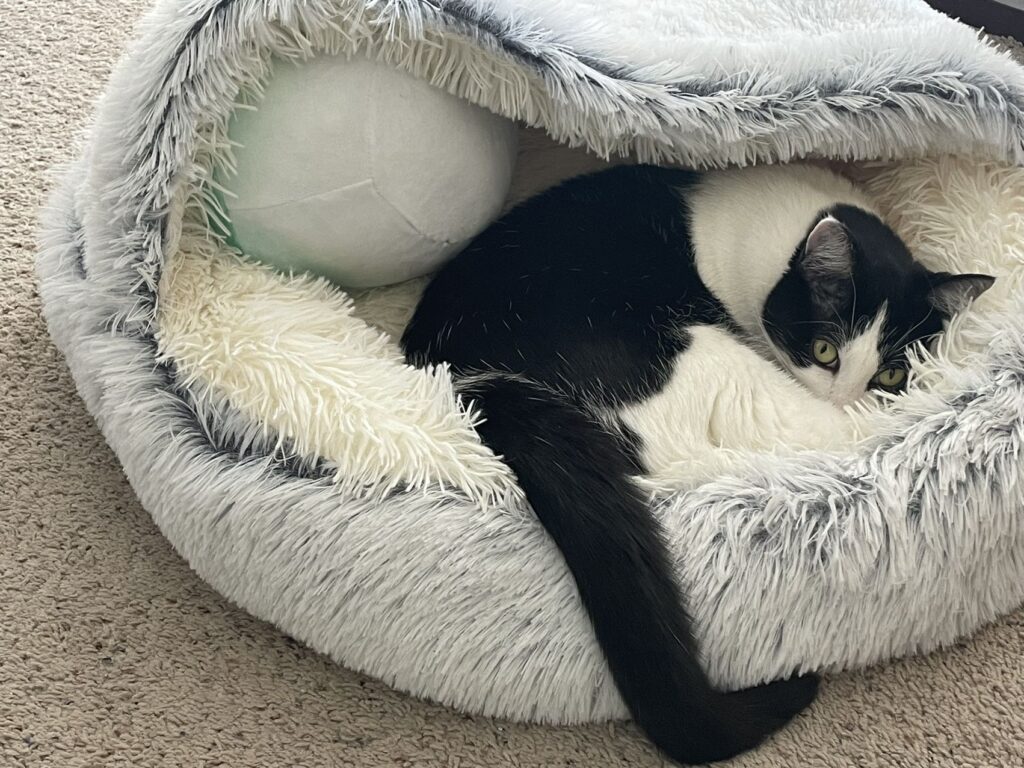Most cat owners first notice symptoms such as weight loss, excessive thirst, lethargy or dull coat...
By Robert Urano
Kidney disease, often in the form of chronic renal failure (CRF), is one of the most common conditions affecting older cats. Because kidneys can function even when substantial parts of the tissue are damaged, CRF may for years go undetected. This disorder, for various reasons, is about three times more common in cats than in dogs.
Most cat owners first notice symptoms such as weight loss, excessive thirst, lethargy or dull coat. Since these symptoms could signal several other possible ailments, analyses of both blood and urine must be done to look for specific markers in order to make a firm diagnosis. Sadly, there is no cure for CRF, but depending on the stage of the disease, often ranked stage 1 through 4 (the most severe), cats may live comfortably for several years.
Cause hard to determine
Pinpointing the cause of kidney disease is usually difficult. However, for certain breeds, notably Persian and exotic cats, a hereditary component may exist. Infections and tumors can also precipitate this progressive disorder, and research has recently implicated the overuse of vaccinations as a possible culprit. Many veterinarians have ceased vaccinating a cat diagnosed with CRF.
Another current suspect is the long-term feeding of dry cat food. In the wild, cats get most of their fluid intake from their prey. Many domestic cats are fed an all-dry food diet and studies show that these cats ingest only half the liquid that cats on a canned or homemade diet consume. Many experts now believe that over time this lack of water can cause stress on the kidneys resulting in damage.
Dry diets also predispose cats to urinary tract diseases which seem to be factors in developing CRF. Despite these and many other reasons for reducing or even eliminating dry cat food, kibble is still the most heavily promoted diet and the most common food fed to cats.
For decades standard treatment for CRF has been to put the cat on a low-protein diet. The rationale, simply put, is that protein has large amounts of phosphorus and phosphorus damages the kidneys. But this approach has always been controversial. Some experts have questioned the research that supports this theory, particularly as it pertains to cats, while many have found that low-protein prescription diets are frequently unappealing to cats, which after all are carnivores. Thus, since weight loss is a major concern, having a cat eat less of an unappealing food is worse, many argue, than having a cat eat more of what the cat likes.
Low-protein diet promoted
The four largest manufacturers in the pet food industry are also the four that have low-protein, low-phosphorous prescription diets (all of which are canned foods) and, perhaps not unexpectedly, make the strongest case for using these products. Although we don’t know for sure how helpful these products are, it is probably still prudent to give them a try or at the very least look for low-protein, low-phosphorous canned food at a pet specialty store.
A cat diagnosed with CRF should be monitored for sufficient fluid intake. This means serving more canned food than dry (eliminating dry if possible) while making sure the cat is eating enough to maintain a healthy weight and in extreme cases injecting subcutaneous fluids into the cat. Medications to help detoxify the body and appetite stimulants are also sometimes employed. Many holistic vets add omega 3 fatty acids, antioxidants and other supplements to the cat’s diet.
Since there is no cure for CRF and a kidney transplant would not be a serious option for most owners, prevention or early detection is our best ally.



